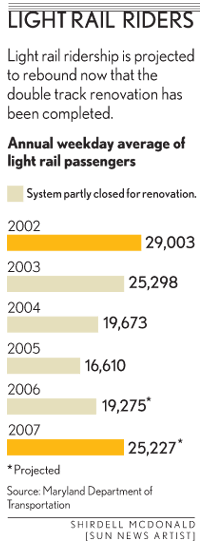John Catoe takes the wheel as Metro’s new general manager

Controversial anti-transit ad by GM car dealers in British Columbia. The ad was pulled after public outcry
is the title today of Steve Eldridge's column in the Examiner. It's a good piece summing up the issues going forward with the WMATA system, ranging from funding to service.
Steve did write something that deserves amplification though:
Are there efficiencies that can be realized in the bus system? The new general manager has a history of working some magic with this form of transit, and that is one of the big reasons he was brought on board. Can he figure out a way to serve this region without eliminating routes because of their underperformance? Is this heavily subsidized form of transportation worth investing in further?
It's important to think of this issue jurisdiction by jurisdiction. I happen to be riding buses more lately, because I am going to areas without direct subway service.
DC-based bus routes tend to have high ridership. I can't speak to buses in MD and VA as much, other than the Rte. 1 corridor in Maryland.
Part of the issue is to build ridership in the other jurisdictions. It's harder though because the distance people travel is greater, and bus service, with somewhat meandering (but necessary to maximize utilization) routes, can be less time efficient. Of course, if you are transit-dependent, that doesn't matter, but it does matter to people with choices.
Bus ridership, October 2006, avg. weekday
DC
X2 Benning road, 14,483
L1, L2, L4, Connecticut Ave., 4,104
H2, H3, H4, Crosstown, 7,247
52, 14th Str., 14,244
42, Mt. Pleasant, 8,017
70s, Georgia Ave., 17,216
30s, Pennsy. and Wisc. Aves., 20,000
S2, 16th St., 15,540
90s, U St., Florida Ave., 8th St. NE, SE, 22,600 (four lines)
B2, Bladensburg, 8,168
(there are additional high ridership routes, these are just the routes with which I am the most familiar )
MD -- there are only 4 Metrobus routes with ridership greater than 6,000 daily riders.
VA -- there are 5 Metrobus routes with ridership between 4,000 and 6,800 daily riders.
Note that VA and MD jurisdictions also have their own bus services. Unfortunately, ridership statistics for these systems weren't provided in the materials distributed at the WMATA 2006 Regional Bus Conference. (Something I rued at the time by the way.)

Photo from Beyond DC.
And, by way of comparison/1, Pittsburgh:

By way of comparison/2, almost as many people ride the 30s buses or the 90s bus routes, as ride the Baltimore Light Rail system.

Index Keywords: transit



0 Comments:
Post a Comment
<< Home